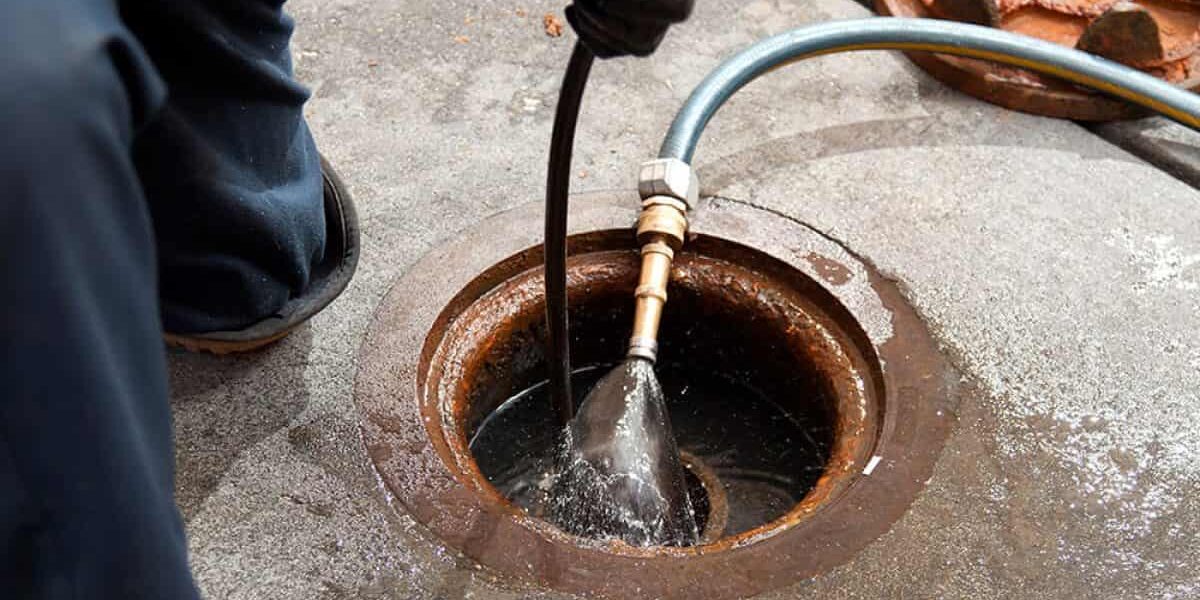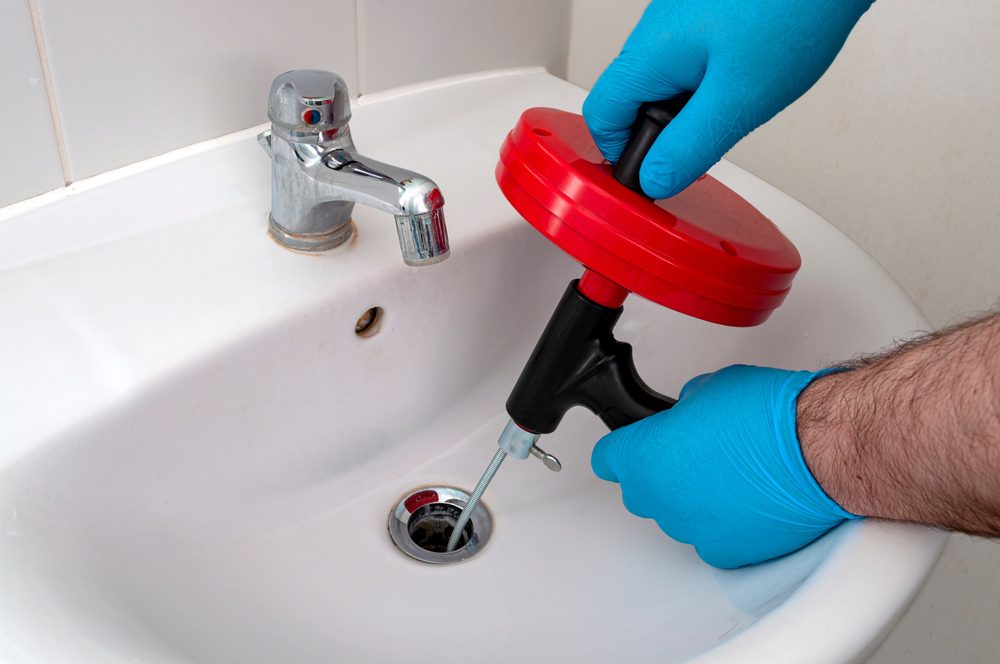Approaches for Tackling a Blocked Drain Before Contacting Professional Plumbers
Approaches for Tackling a Blocked Drain Before Contacting Professional Plumbers
Blog Article
Here below you will discover a bunch of superb advice concerning Tips for Dealing with Clogged Drains and Sewer Lines.

Intro
Taking care of a blocked drain can be a discouraging experience, interfering with daily activities and potentially causing damages to your residential or commercial property. However, before reaching out to plumbing specialists, there are actions you can take to address the concern yourself. In this guide, we'll discover DIY solutions and preventive measures to tackle an obstructed drain successfully.
Recognizing the Concern
The very first step in attending to a blocked drain is acknowledging the indications. Slow water drainage, gurgling noises, foul odors originating from drains, or water backing up prevail indications of an obstructed drain. Determining these indications early can help prevent additionally complications.
Typical Sources Of Obstructed Drainpipes
Comprehending the aspects that contribute to drain clogs is important for effective resolution. Usual wrongdoers consist of hair, soap residue, grease, food particles, and foreign things like hygienic items or paper towels. Tree origins invading underground pipelines can additionally cause considerable blockages.
Do it yourself Solutions
For minor obstructions, several DIY options can be effective. Putting boiling water down the drain can assist dissolve grease and debris. Baking soda and vinegar or a mix of salt and cooking soda can function as all-natural cleaners. Utilizing a plunger or pipes serpent to dislodge blockages is one more alternative.
Tools and Equipment
Having the right devices handy can make do it yourself drainpipe cleaning much more reliable. A bettor is a versatile device for getting rid of clogs in sinks, bathrooms, and showers. A pipes snake or auger can get to much deeper blockages, while drainpipe cleaning chemicals can be used very carefully for stubborn obstructions.
Preventive Measures
To prevent future obstructions, adopting safety nets is essential. Mount drain guards or strainers to catch hair and particles before they go into the pipes. On a regular basis flush drains with warm water to liquify oil build-up, and prevent taking care of grease or solid waste away.
When to Call an Expert
While DIY services can solve small clogs, specific signs indicate the demand for expert aid. Consistent blockages, foul odors despite cleaning up initiatives, or multiple drains pipes backing up all at once are red flags that warrant skilled treatment.
Choosing the Right Pipes Solution
When selecting a pipes solution, consider variables such as experience, licensing, and customer evaluations. Select a respectable plumbing professional with a record of quality workmanship and transparent pricing techniques.
Cost Considerations
The price of professional drainpipe cleaning services can vary depending on the extent of the clog and the plumbing professional's rates. Demand quotes from numerous companies and ask about any kind of service charges to make sure transparency and prevent surprises.
Safety and security Precautions
When attempting do it yourself drain cleaning, prioritize safety and security. Wear protective gloves and eyewear to prevent contact with unsafe chemicals or bacteria. Never blend various drain cleansing products, as this can produce dangerous fumes.
Case Studies
Real-life instances highlight the effectiveness of DIY options and the relevance of prompt expert treatment in solving drainpipe clogs.
Conclusion
By complying with the suggestions described in this overview, you can properly tackle blocked drains pipes and protect against future pipes concerns. Whether going with do it yourself services or seeking specialist assistance, timely activity is vital to maintaining a healthy and balanced pipes system and protecting the integrity of your home.
How to Clear a Clogged Drain Yourself (And When to Call In the Professionals)
What Can Clog a Drain
Dirt Skin flakes Hair Grease Soap scum Food Offset pipes Tree roots Small objects Mineral buildup DIY Tricks to Unclog a Drain
You can fix this! Once you have identified the source of the clog (or have a vague idea), you can try one or a combination of these fixes in order to clear your plumbing.
Wire Hanger or Snake
Untangle and clear out hair from a drainpipe with a homemade snake. Use a straightened-out wire hanger with a 90-degree angle hook to locate the clog and drag out any unwanted material.
Remember not to push the clog further down to where the wire hanger cannot reach! If you need to follow up with a plunger, give it a try. Your efforts might be more successful after it’s been wire-snaked.
If you want to get fancy and don’t have a wire hanger to spare, head to the store and pick up a hand-operated drain snake. You can get one for $10-$30. It may save you the hassle, and provide additional length to reach deep into the clogged pipe.
Plunger
A cup plunger has a suction cup attached to a wooden handle. The rubber creates a seal around the drain, and increases the pressure force of the plunger.
Plunge for 30-second increments to loosen the clog. This may need to be repeated over the course of 15-20 minutes. Once plunged, run the water to flush the remaining material out of the drain.
Remember– never use a plunger if you have used a chemical drain cleaner. These chemicals can splash up from the force of the plunger and cause serious injury or burns.
Boiling Water
Hot water can sometimes break up materials into a flushable amount. Dirt, grease, and soap buildup requires heat in order to unstick from surfaces.
Take your kitchen kettle and heat your water to a boil. Once it reaches a rolling boil, pour it directly down the drain into the blockage. Carefully follow with plunging, if necessary.
Don’t worry if this takes more than one try! It can often take multiple kettles and repeated plunging in order to clear a particularly stubborn clog.
Chemical Drain Cleaner
As a last resort, pick up a bottle of chemical drain cleaner. Drain-cleaning chemicals are potent, and not very good for the environment.
You may need to wear protective eyewear in gloves before handling your bottle of chemical drain cleaner. Follow the instructions printed on the bottle, and flush with water as soon as the instructions allow. Do not follow with plunging.
Baking Soda and Vinegar
As a safer alternative to chemical drain cleaner, baking soda and vinegar can create a chemical reaction that clears tough clogs.
Combine one cup of cleaning vinegar with one cup of boiling water, and set aside. Once you have done this, pour half a cup of baking soda down the drain. Give the baking thirty seconds to settle and cover a large portion of the problem drain.
Following the baking soda, pour down your vinegar and hot water solution. Once the vinegar and baking soda combine, the mixture will bubble and fix. Let this reaction fizzle in the drain for about an hour.
After an hour, follow with a kettle’s worth of hot water. The heat and liquid should flush out any remaining material.
When to Call a Plumber
If your DIY attempts haven’t cleared your clog drain, it’s time to call in a professional. It’s not worth losing access to your kitchen sink or high-traffic bathroom. A clog in a vital area can keep you from the things you’d rather be doing, and derail your routine.
Anytime a clog is causing water to spread is a time to call in a plumbing service. What starts out as a little bit of water can quickly grow into serious, expensive water damage.
Additionally, a serious clog can result in burst pipes or serious leaks. Make sure you know when to take it seriously!
https://myguysnow.com/how-to-clear-a-clogged-drain-yourself-and-when-to-call-in-the-professionals/

I hope you liked our topic on Tips for Dealing with Clogged Drains and Sewer Lines. Thanks so much for taking the time to browse our post. Sharing is nice. Helping others is fun. Many thanks for your time invested reading it.
Book Report this page